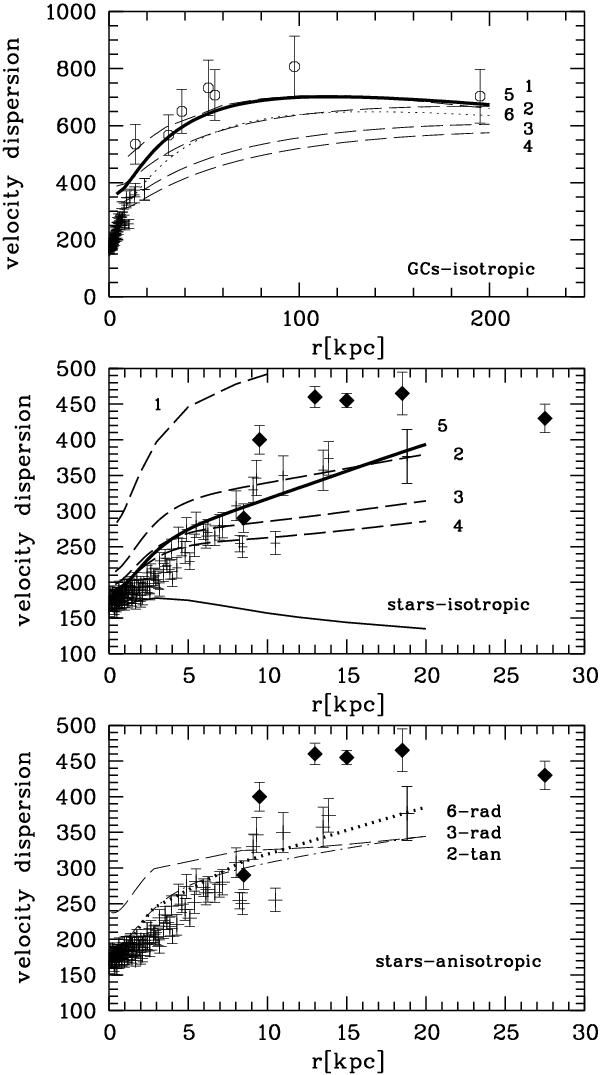Fig. 4

Upper panel: the extended regime of the globular clusters and their velocity dispersions. Open circles denote globular clusters, crosses (which merge together) denote stars. The kinematical data of Ventimiglia et al. (2010) are plotted in the lower two panels see Sect. 3.4 for more details. Six isotropic models (stellar mass+gas mass+dark halo), based on different halo shapes, are indicated. The halo properties are listed in Table 1. Thick solid line (halo 5): a cored halo (Eq. (10)). Dashed lines: NFW halos (Eq. (6)). Numbering is the sequence of vertical order. Halo 1 is the NFW halo quoted by Łokas et al. (2006) from the analysis of galaxy velocities in Abell 1060 (Eq. (6)) (almost coinciding with halo 5). Dotted line (almost coinciding with halo 2): halo 6, which is a cored Burkert halo designed to represent the stars moving with a radial anisotropy. Middle panel: the regime of stellar kinematics with isotropic models using the same numbering. The kinematical data of Ventimiglia et al. (2010) are plotted as black diamonds (also in the lower panel). Halo 1 deviates strongly, but is not cosmological according to Macciò et al. (2008). The lower solid line without any number is a model without dark matter for comparison. Lower panel: these three models demonstrate the effect of anisotropy of the stellar orbits. Halo 3: radial anisotropy according to Hansen & Moore (2006). Halo 2: constant tangential anisotropy of –0.5. Halo 6 is a Burkert halo with radial anisotropy. See Sects. 4 and 3.4 for details.
Current usage metrics show cumulative count of Article Views (full-text article views including HTML views, PDF and ePub downloads, according to the available data) and Abstracts Views on Vision4Press platform.
Data correspond to usage on the plateform after 2015. The current usage metrics is available 48-96 hours after online publication and is updated daily on week days.
Initial download of the metrics may take a while.


